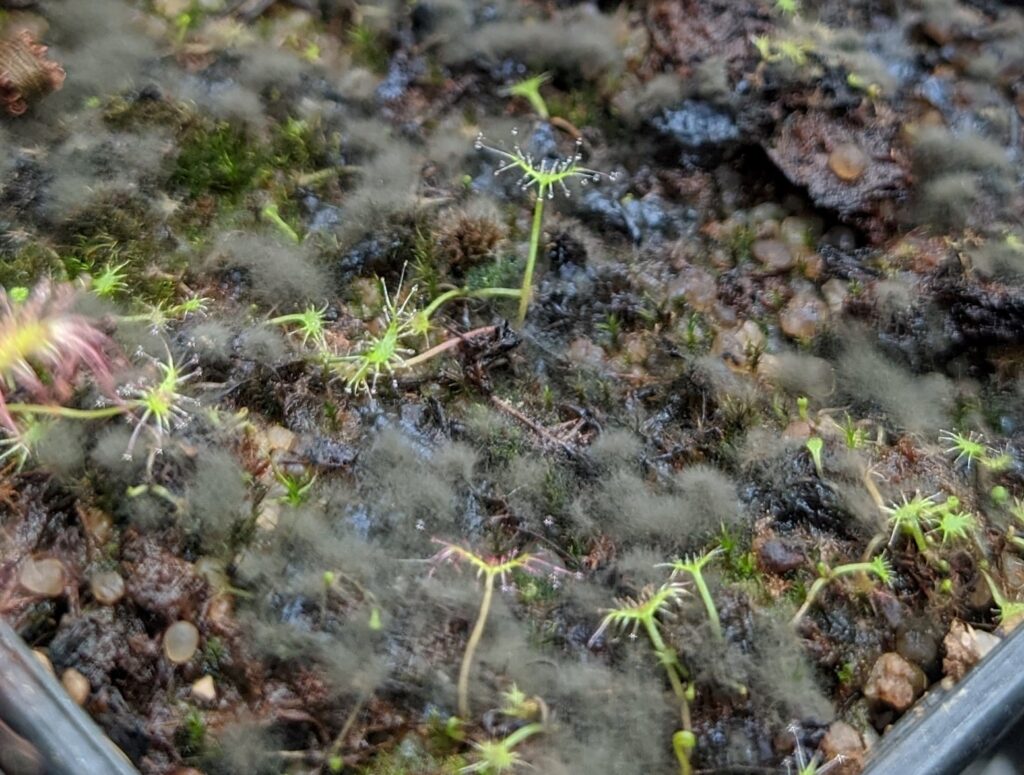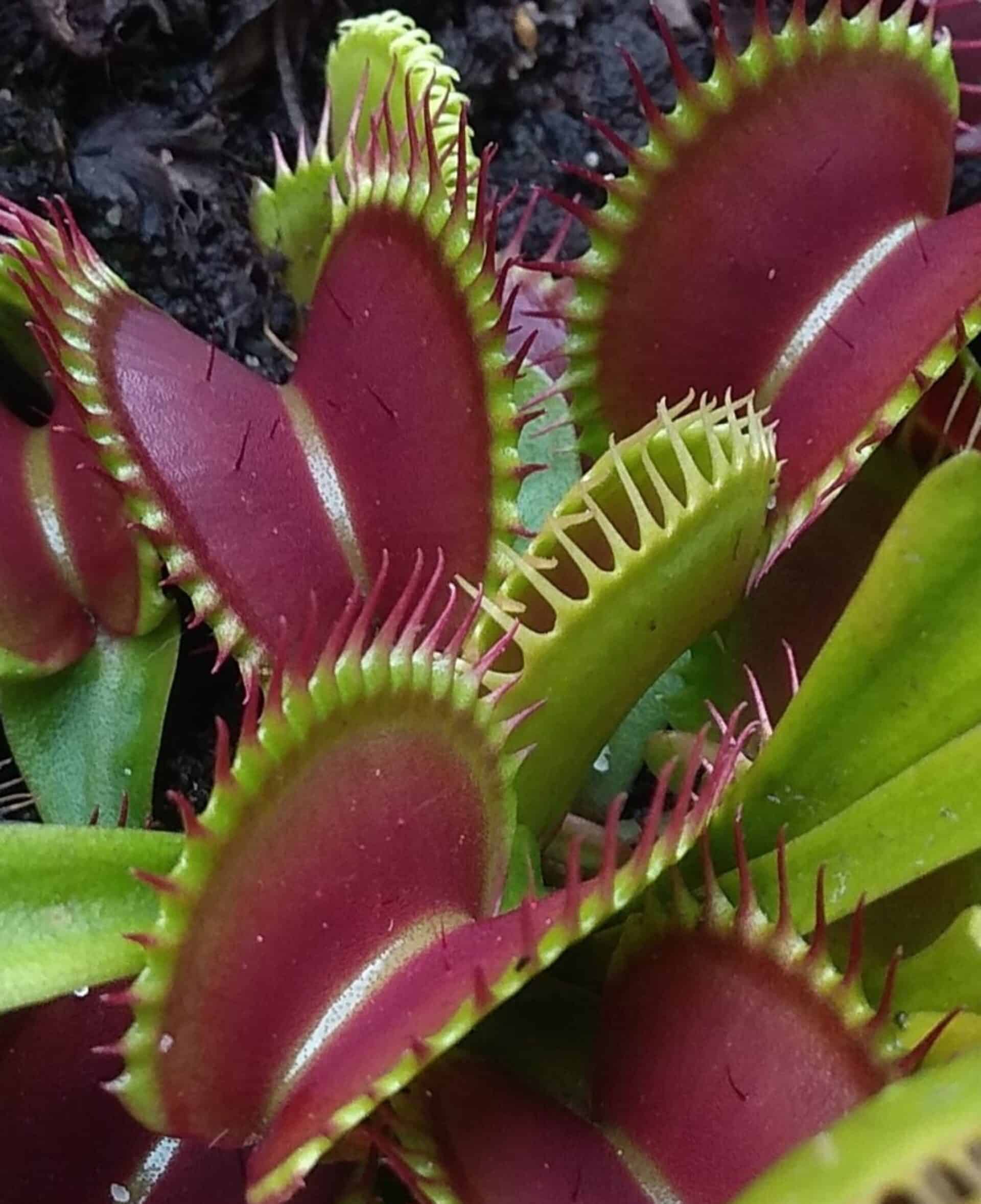Mold on substrate
Most carnivorous plants are cultivated in consistently moist to wet substrates, and those not kept permanently waterlogged are still grown in high humidity. This environment promotes the growth of mold. Healthy plants are generally resistant to mold, and mold on the plants themselves usually only appears under unsuitable conditions, such as on trapped prey. The most common issue is mold on substrate.
Mold typically occurs during the winter season for several reasons. A lack of sunlight, which mold dislikes, is a primary factor. Additionally, airflow decreases due to reduced ventilation or when greenhouses are winterized, which also increases humidity. Warm air circulation from heating systems stirs up indoor dust, further contributing to mold growth.

Methods to combat mold on substrate
- If the substrate smells musty, it’s best to transplant the plant into a fresh substrate. Old or poor-quality substrate increases the risk of mold and is also unsuitable for the plant. Mold under such conditions can persist throughout the year, and the following methods may not resolve the issue.
- A natural and effective approach is to improve ventilation. Airflow helps keep mold at bay. For indoor plants, intensify ventilation. In enclosed cases, install a small fan (e.g., a PC fan) to ensure occasional air circulation.
- A simple method for addressing early mold growth is spraying the surface of the substrate with water. This can suppress the mold. To avoid unnecessary stress on the plants, it’s advisable to use soft, chlorine-free water.
- Slightly more effective is spraying with chamomile extract (chamomile tea will suffice). Chamomile enhances the solution’s effectiveness, providing a longer-lasting treatment. It’s safe for plants and can be applied without daily „showers.“
- Another, slightly stronger method involves a solution of chamomile and cinnamon. The easiest way is using tinctures: mix 100 ml of distilled or rainwater with 1 ml of tincture, adding 25 drops of cinnamon tincture and 25 drops of chamomile tincture.
- Colloidal silver can also combat mold. A spray concentration of 5–10 ppm (5–10 mg of silver per 1 liter of distilled or rainwater) is suitable.
- As a last resort, use a disinfectant like Purolit. This chlorine-based product is effective against mold and can also sanitize growing spaces, pots, etc. Mix the concentration according to the instructions and apply by spraying.
Mold on the substrate tends to reappear, so sprays need to be reapplied as required (usually until spring). The remedies listed here are safe for health. Riskier chemical solutions also exist on the market, but I hesitate to recommend them as they may harm plants. Personally, I don’t use them.

